If you could complain about discrimination to Mother Nature I would, but she doesn't listen. The wind that races eastwards from the Irish Sea thirty miles away across my unprotected plot selected some greenhouses to attack. Plots two through to seven all had damage, and I am on plot seven. Why me, Mother Nature! Am I not very green? I suspect that a short lived vortex was at the root of this very localized damage. Several windows were blown out. Fortunately, as a Briton I am no stranger to wind, so I leave it a pathway for it to escape. But it still took out some panes of glass. One pane went when a bolt shifted in the framework causing a weak aluminium strut to bend, so the glass broke under the strain. But my discrimination case against Gaia would fail on the grounds that a week or so earlier other greenhouses went completely. Karen, a really pleasant and jolly woman, lost her whole greenhouse, which turned into mangled aluminium and broken glass. I have been fortunate.
So what repairs are needed? Jeff, a good friend, gave me some spare glass, some of which I have fitted into the empty spaces. But not all of it fits, so I have had to order some replacements in. I am using polyurethane instead of glass, when I can get it. Slowly over the years I am moving to polyurethane panels, and there's a reason: they don't break as easily as glass does. My young grand-daughter will be brought to the allotment as the weather warms, and I want her to wander around freely-and safely. So any remaining glass will be covered with metal mesh for safety's sake.
We don't use putty to affix the glass, but we use W clips, four for each pane. However, fixing down the structure needs something stronger than clips. I have bolted the greenhouse to flag stones and cemented it down with Pink Grip, a very powerful cement. The bolts have held, but I am going to reinforce the Pink Grip, as the wind can exert quite a force. I have repaired the small bolt that shifted, and some panes that had slipped were restored into position.
Next will come improvements to the greenhouse floor. My floor is wood chip,and it is looking fine, but wood chip needs constant refreshment, as it composts down. Then the pots will need filling with compost, multipurpose compost that is.But I am in no hurry to plant tomatoes and other greenhouse plants,for I learned my lesson several years ago when I planted tomato plants in an unheated greenhouse, only for there to be a late frost. All dead overnight! Lesson learned, but gardeners have to learn from their mistakes. This year I am going to try new plants, aubergines I hope. You see, my daughter-in-law grew up in Portugal,where these were part of her diet. I have never grown them, but she is keen, so why not give them a try? Andrew, my son, will help me add a second greenhouse, this time a fabric one,so we can grow more plants in protected conditions, such as aubergines. We will fill in the space vacated by a cherry tree that I was forced to fell when it caught disease from an infected damson.


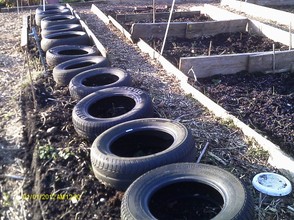



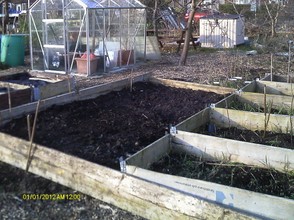
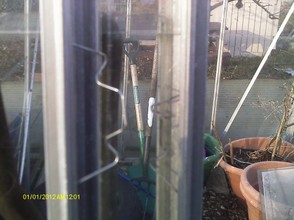



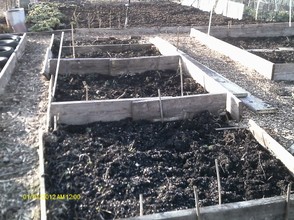
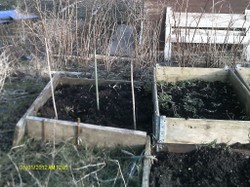

 Pilgrimage. A reviewon 06/15/2025
Pilgrimage. A reviewon 06/15/2025
 Leo the Fourteenthon 05/09/2025
Leo the Fourteenthon 05/09/2025
 The Melsonby Hoardon 03/25/2025
The Melsonby Hoardon 03/25/2025


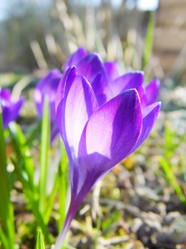
Comments
Y0u are correct. B0th are on paving. I have a terraced house and the houses in the terrace were not built with gardens. I have limited space. 99
Thank you for your comment below, in answer to my previous observation and question.
Your previous comment three boxes down, in answer to my previous observation and question, describes you and your wife also delegating space to a grow house and to a raised bed.
Might the grow house and the raised bed also be on paving stones?
(Many Unitedstatesians opt for a grassy back yard -- congruent with grassy front and side yards ;-D -- with perhaps a paved sidewalk along the house side and to a garage or a shed. Work areas on that sidewalk therefore occur along or on the back porch and garage, house and shed walls.)
Paving stones
Thank you for your comment below, in answer to my previous observation and question.
Your container garden enchants me and engenders even more -- ;-D -- questions.
For starters, is the rectangular arrangement one of pots on grass, gravel, ground or something else?
We have p0rs arranged in a rectangle, a small grow house and I am getting a raised bed.
Thank you for your comment Jan. 13, 2024, in answer to my previous, previous-day observation and question Jan. 12, 2024.
Your description 11 comment boxes down, on Feb. 26, 2016, that "my house does not have a garden so I have a container garden in the back yard" catches my attention.
Does a container garden have just pots lined, perhaps against the back wall of your house? Or is there something such as a stretch of grass or of gravel sharing the space?
Unitedstatesian back yards with container gardens might have houseplant-like pots against the back wall or half-buried in the back lawn or on the back porch. There might be such pots hanging from the porch ceiling or from the front and side walls of a car port, garage or shed at the end of a house side-running driveway
It is the same substance . The polythene is clipped on to the frame.
Thank you!
Might polythene be synonymous with Unitedstatesian polyethylene?
Would that polythene be top-hemmed for inching onto a rod or nailing onto a board?
Would it be heavy enough to stay in place or would it require some kind of battening down?
Strong polythene.
The last paragraph under your first subheading, Repairs to the greenhouse, mentions your son realizing a fabric greenhouse.
What fabric would be most appropriate, most cleanable and most durable?